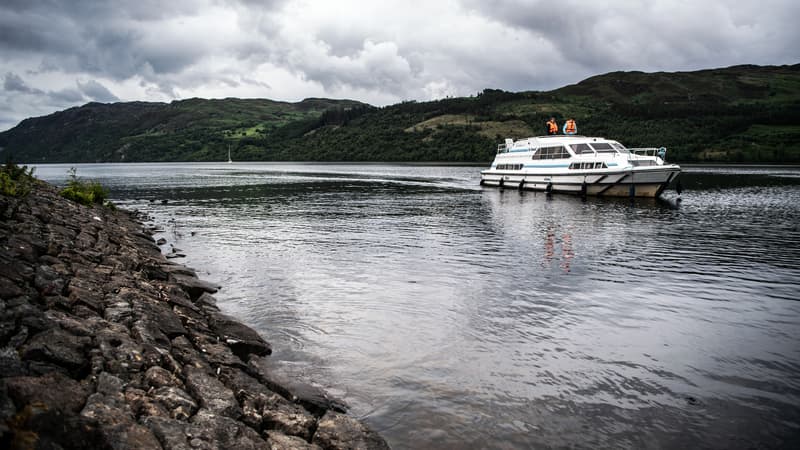What if, despite decades of fruitless searches, “Nessie” really was hiding in the murky waters of Loch Ness? Researchers and enthusiasts launch the biggest Scottish monster hunt in 50 years on Saturday.
Drones equipped with thermal scanners, ships with infrared cameras, hydrophones… Every means is used to try to unravel the mystery that has captivated the entire world for generations.
“Our goal has always been to record, study and analyze all sorts of hard-to-explain natural phenomena and behaviors,” says Alan McKenna of Loch Ness Exploration’s volunteer research team.
He organizes the “hunt” on Saturday with the Loch Ness Center in Drumnadrochit, a small town in the north of Scotland located on the shores of the loch.
A legend dating back to ancient times
The researchers believe the thermal scanners could identify any anomalies, while the hydrophone will pick up unusual cries underwater from the 56-square-kilometre, 240-meter-deep lake.
The presence of a monster in Loch Ness is a legend dating back to antiquity: stone carvings made by the Picts then living in the area depict a mysterious finned beast.
The first written record of the creature dates back to AD 565, in a biography of the Irish monk Saint Columba, an Evangelist to Scotland in the sixth century, who explained that he ordered the monster to retreat.
The first modern sighting of Nessie was reported in a local newspaper in May 1933. A local businessman and his wife were driving by the lake when they were surprised by “a huge wave” in the lake water.
Fake Fingerprints and Hoax
In December 1933, the British newspaper The Daily Mail he enlists a South African big game hunter, Marmaduke Wetherell, to track down the creature. He finds large footprints that he believes belong to an animal about twenty feet long.
Scientists at the Natural History Museum later explained that the tracks had been left with either an umbrella stand or a false hippo foot.
In 1934, the English physician Robert Wilson took what became known as the “surgeon picture”, an image that appears to represent Nessie’s head and elongated neck emerging from the water. The photo, published in the daily mailit’s a hoax but it propels the Loch Ness Monster to international stardom.
According to the Loch Ness Center, there have been more than 1,100 official Nessie sightings to date, and the monster contributes millions of pounds to the Scottish economy each year through tourism.
A prehistoric marine reptile?
Over the years, scientists and hobbyists have tried to find evidence of a large fish in the depths of the lake, while some have suggested that the monster could be a prehistoric marine reptile like a plesiosaur.
In 1972, the Loch Ness Inquiry Office carried out the largest search of the loch to date, without success. In 1987, during Operation Deepscan, sonar was deployed across the entire width of the lake.
Its organizers then claim to have found an “unidentified object of unusual size and strength” in the depths.
In 2018, researchers conducted a DNA study of Loch Ness to determine what organisms live in its waters. Nothing has ever been found except many eels.
“This weekend gives us an opportunity to search the waters in a way we’ve never seen before, and we can’t wait to see what we find,” said Paul Nixon, executive director of the Loch Ness Centre.
Organizers have brought in volunteers to watch for any movement in the water or anything else unexplained over the weekend, but due to “overwhelming demand” from enthusiasts, the group is no longer accepting applicants.
Source: BFM TV


